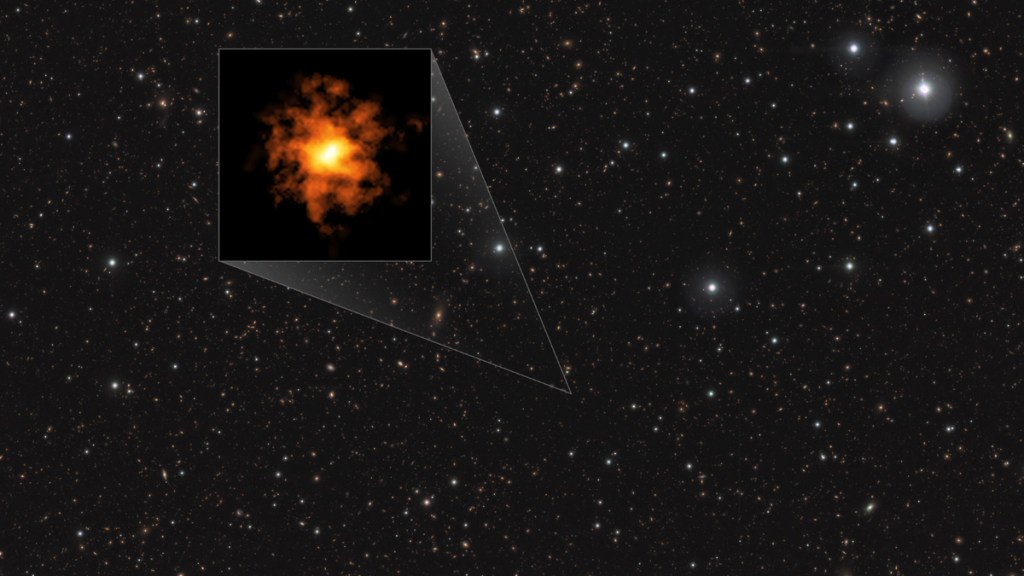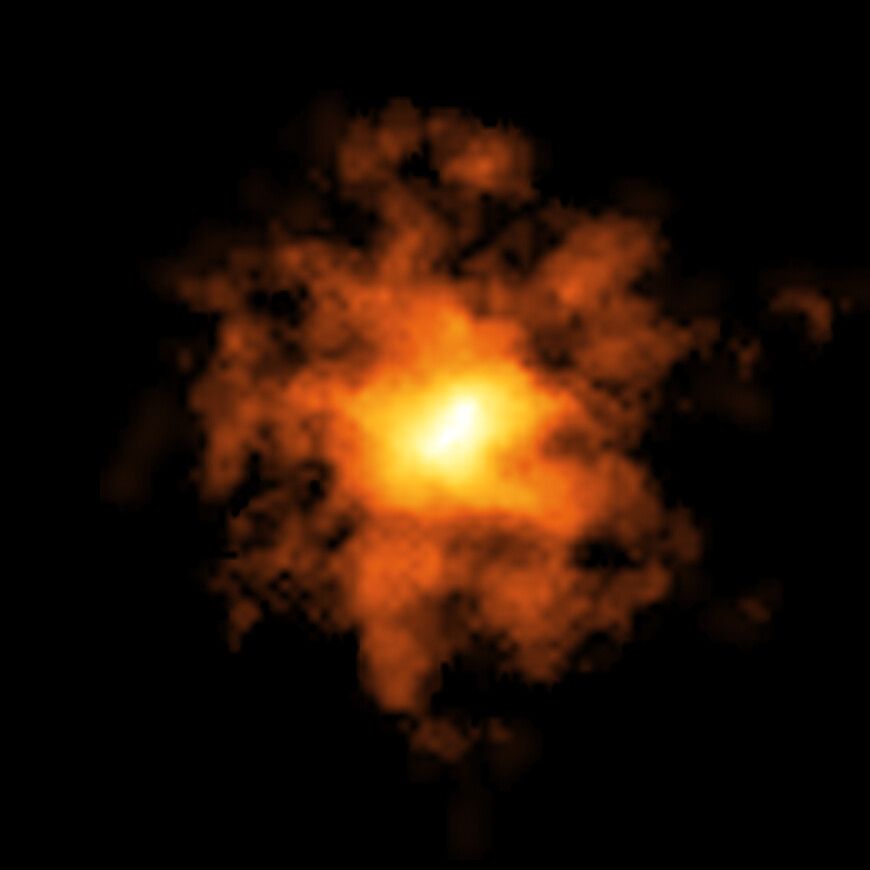
Record-breaking ancient spinning galaxy challenges cosmic evolution theories (Image Credit: Space.com)
The most distant and thus earliest rotating disk galaxy ever spotted has surprised astronomers and could challenge our theories of galactic evolution. Not only does it seemingly exist too early in the cosmos to be strongly spinning, the galaxy also shows hints of spiral arms similar to highly evolved “modern” galaxies like our own Milky Way.
The galaxy, designated REBELS-25, is seen as it was just 700 million years after the Big Bang, at a time when astronomers expect galaxies to have been small and messy. Living up to its name, this rebellious galaxy has defied that trend by appearing orderly rather than chaotic.
REBELS-25 was discovered by a team of astronomers using the Atacama Large Millimeter/submillimeter Array (ALMA), a network of 66 radio telescopes located in the Atacama Desert region of Northern Chile.

“According to our understanding of galaxy formation, we expect most early galaxies to be small and messy-looking,” team member Jacqueline Hodge, an astronomer at Leiden University in the Netherlands, said in a statement.
Related: What is a galaxy?
A tidy young rebel
Modern galaxies like the Milky Way in the 13.8-billion-year-old universe have had billions of years to develop distinctive shapes and characteristics, such as striking spiral arms.
In the early universe, before this time to organize became available, astronomers expect to see messy and clumpy galaxies. These early galaxies are expected to have developed the shape of contemporary galaxies over the course of billions of years as they engaged in a series of collisions and mergers, developing characteristics like disk shapes and spiral arms incredibly slowly.
The discovery of REBELS-25, when the universe was just 5% of its current age, throws that timescale into doubt.
“Seeing a galaxy with such similarities to our own Milky Way, that is strongly rotation-dominated, challenges our understanding of how quickly galaxies in the early universe evolve into the orderly galaxies of today’s cosmos,” study team leader Lucie Rowland, also of Leiden University, said in the same statement.

When astronomers first uncovered REBELS-25 with ALMA, the galaxy was already considered fascinating because it showed signs of rotation. However, this initial investigation wasn’t high-enough resolution to confirm that this is indeed the most distant, strongly rotating galaxy ever seen.
To uncover the structure and motion of this early galaxy more precisely, the team continued to study it with ALMA, but this time at a higher resolution. This showed gas in REBELS-25 moving both toward and away from Earth. This is possible because of a phenomenon called blueshift and redshift.
When a light source is moving toward Earth, the wavelength of this light is compressed. This “shifts” the light toward the short-wavelength “blue end” of the electromagnetic spectrum. Thus, a light source moving toward us is “blueshifted.” On the flipside of this, if a light source is moving away from us, the wavelength of the light it emits is stretched, shifting it toward the “red end” of the electromagnetic spectrum.
The new study confirmed that REBELS-25 is a record-breaking galaxy, the earliest and most distant, strongly rotating galaxy ever seen.
“ALMA is the only telescope in existence with the sensitivity and resolution to achieve this,” team member Renske Smit, of Liverpool John Moores University in England, said in the same statement.
REBELS-25 seems to have other surprises that it is yet to fully divulge. For example, the early galaxy appears to have characteristics similar to those of the roughly 13.6-billion-year-old Milky Way. These include an elongated “central bar” of stars with hints existing that it may even possess spiral arms. This would lead to REBELS-25 breaking another record as the most distant and earliest spiral galaxy ever seen. The current record holder is cheers-2112, seen by the James Webb Space Telescope (JWST) when the universe was around 2.1 billion years old.
“Finding further evidence of more evolved structures would be an exciting discovery, as it would be the most distant galaxy with such structures observed to date,” Rowland concluded.
The team’s research has been accepted for publication in the Monthly Notices of the Royal Astronomical Society.





